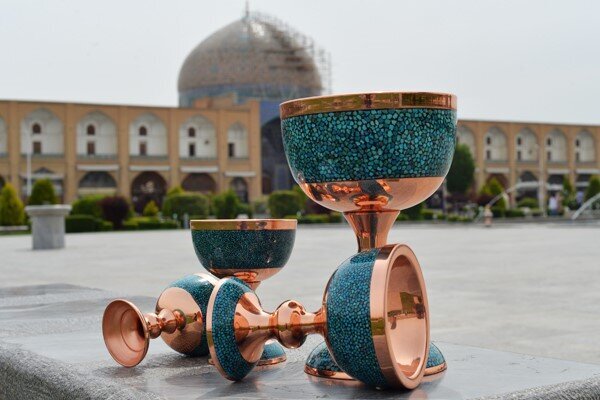Deputy minister sees handicrafts as cultural ambassadors

TEHRAN – Creating handicrafts is a significant way of spreading culture, the new deputy tourism minister for handicrafts Maryam Jalali Dehkordi has said.
“When handicrafts are infused with identity and art, they are no longer featureless productions but they are cultural ambassadors,” Jalali Dehkordi said on Friday.
She made the remarks in a meeting held at Tehran’s Niavaran Cultural-Historical Complex on the occasion of World Handicrafts Day, ISNA reported.
It is hoped that handicrafts and traditional arts will one day become the heart of economic activity in this country, with the power to enhance the welfare of its citizens, she added.
She also noted that handicrafts must be functional and not just aesthetically pleasing.
“Handicrafts must be practical as well as decorative if they intend to be used in everyday life,” she explained.
Last week, Cultural Heritage, Tourism, and Handicrafts Minister Ezzatollah Zarghami said that many Iranian handicrafts have untapped potential for becoming practical.
“We must incorporate handicrafts into everyday life and make them practical.”
These handmade products are still far from what they should be and every related organization needs to get involved to fill this gap, the minister explained.
“I request all the colleagues in this section to engage all their experience and energy into this task since that is where good ideas will flourish,” he said.
With 14 entries, Iran ranks first globally for the number of cities and villages registered by the World Crafts Council, as China with seven entries, Chile with four, and India with three ones come next. For instance, Shiraz is named a “world city of [diverse] handicrafts”, Malayer is a global hub for woodcarving and carved-wood furniture, while Zanjan has gained the title of a “world city of filigree”.
In addition, the ancient city of Shiraz has been chosen to host the 39th General Assembly of the World Crafts Council-Asia Pacific Region (WCC-APR) in May 2023. Shiraz has a remarkable amount of handicraft pioneers. With an average age of 70, some of these pioneers are still active at their workshops. The occupational records of about 100 pioneers are collected and are annually praised by the custodians of the WCC General Office.
Available data compiled by the Ministry of Cultural Heritage, Tourism, and Handicrafts suggests the value of Iran’s handicrafts exports stood at $120 million during the first eleven months of the past Iranian calendar year 1399 (March 20, 2020 – February 18, 2021), Mehr reported. The country’s handicrafts exports slumped during the mentioned months in comparison to the same period last a year earlier due to the damage the coronavirus pandemic has inflicted on global trade.
The Islamic Republic exported $427 million worth of handicrafts during the first eleven months of the calendar year 1398. Of the figure, some $190 million was earned via suitcase trade (allowed for customs-free and tax-free transfer) through 20 provinces, according to data compiled by the Ministry of Cultural Heritage, Tourism and Handicrafts. Ceramics, pottery vessels, handwoven cloths as well as personal ornamentations with precious and semi-precious gemstones are traditionally exported to Iraq, Afghanistan, Germany, the U.S., the UK, and other countries.
ABU/AFM
Leave a Comment